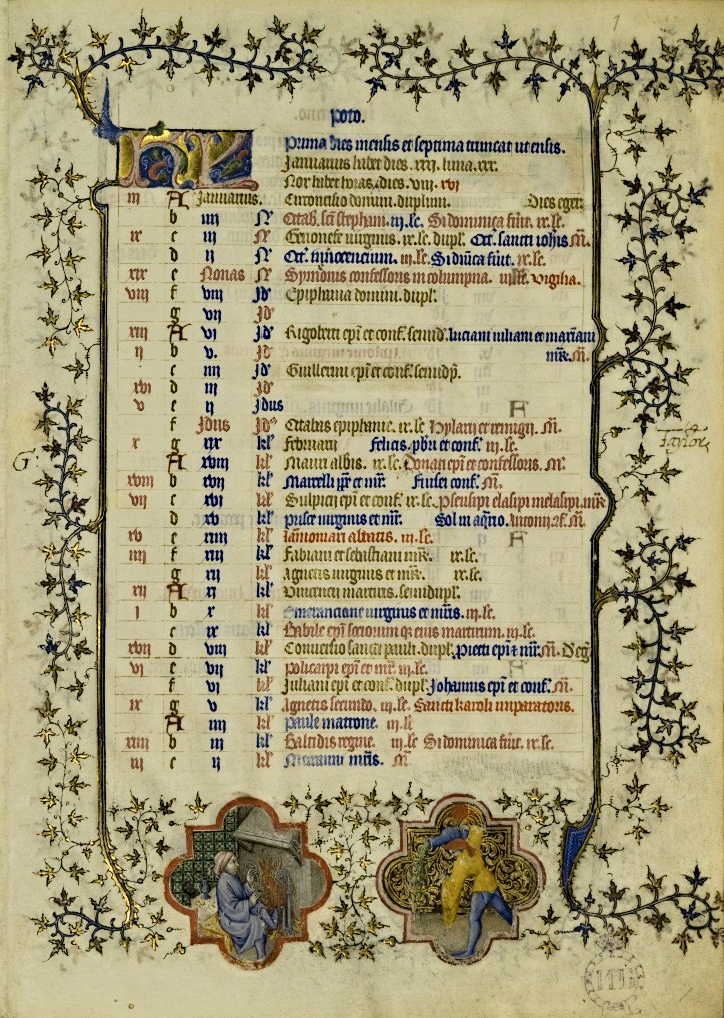Golden numbers on:
[Wikipedia]
[Google]
[Amazon]
 A golden number (sometimes capitalized) is a number assigned to each
A golden number (sometimes capitalized) is a number assigned to each
 A golden number (sometimes capitalized) is a number assigned to each
A golden number (sometimes capitalized) is a number assigned to each year
A year is a unit of time based on how long it takes the Earth to orbit the Sun. In scientific use, the tropical year (approximately 365 Synodic day, solar days, 5 hours, 48 minutes, 45 seconds) and the sidereal year (about 20 minutes longer) ...
in sequence which is used to indicate the dates of all the calendric new moons for each year in a 19-year Metonic cycle
The Metonic cycle or enneadecaeteris (from , from ἐννεακαίδεκα, "nineteen") is a period of almost exactly 19 years after which the lunar phases recur at the same time of the year. The recurrence is not perfect, and by precise obser ...
. They are used in computus
As a moveable feast, the date of Easter is determined in each year through a calculation known as – often simply ''Computus'' – or as paschalion particularly in the Eastern Orthodox Church. Easter is celebrated on the first Sunday after th ...
(the calculation of the date of Easter
Easter, also called Pascha ( Aramaic: פַּסְחָא , ''paskha''; Greek: πάσχα, ''páskha'') or Resurrection Sunday, is a Christian festival and cultural holiday commemorating the resurrection of Jesus from the dead, described in t ...
) and also in Runic calendar
A Runic calendar (also Rune staff or Runic almanac) is a perpetual calendar, variants of which were used in Northern Europe until the 19th century. A typical runic calendar consisted of several horizontal lines of symbols, one above the ...
s. The golden number of any Julian or Gregorian calendar year can be calculated by dividing the year by 19, taking the remainder, and adding 1. (In mathematics this can be expressed as (''year number'' modulo
In computing and mathematics, the modulo operation returns the remainder or signed remainder of a division, after one number is divided by another, the latter being called the '' modulus'' of the operation.
Given two positive numbers and , mo ...
19) + 1.)
For example, divided by 19 gives , remainder . Adding 1 to the remainder gives a golden number of .
The golden number, as it was later called, first appears in a calendar composed by Abbo of Fleury around the year 1000. Around 1162 a certain Master William referred to this number as the golden number "because it is more precious than the other numbers." The name refers to the practice of printing golden numbers in gold. The term became widely known and used, in part through the computistic poem ''Massa Compoti'' written by Alexander de Villa Dei around 1200.
See also
* Dominical letter *Date of Easter
As a moveable feast, the date of Easter is determined in each year through a calculation known as – often simply ''Computus'' – or as paschalion particularly in the Eastern Orthodox Church. Easter is celebrated on the first Sunday after the ...
*Paschal Full Moon
An ecclesiastical full moon is formally the 14th day of the ecclesiastical lunar month (an ecclesiastical moon) in an ecclesiastical lunar calendar. The ecclesiastical lunar calendar spans the year with lunar months of 30 and 29 days which are in ...
References
External links
*{{cite encyclopedia, url=http://encarta.msn.com/encyclopedia_761573440/Metonic_Cycle.html , archiveurl=https://web.archive.org/web/20091031110911/http://encarta.msn.com/encyclopedia_761573440/Metonic_Cycle.html , archivedate=October 31, 2009 , title=Metonic Cycle , encyclopedia=Microsoft Encarta Online Encyclopedia , url-status=dead Time in astronomy Calendars